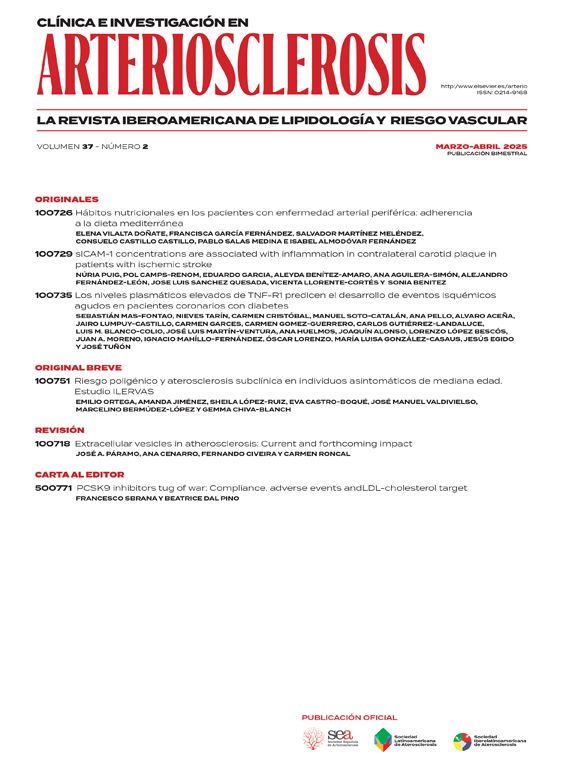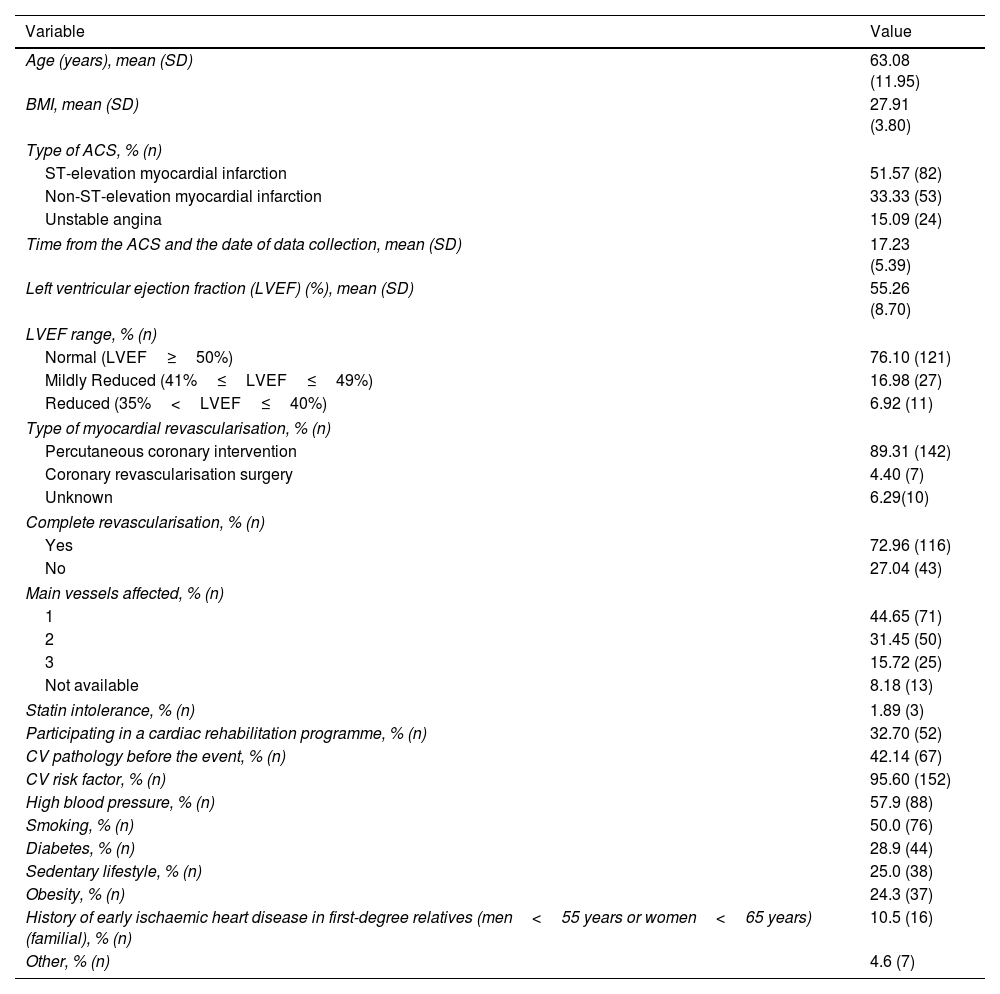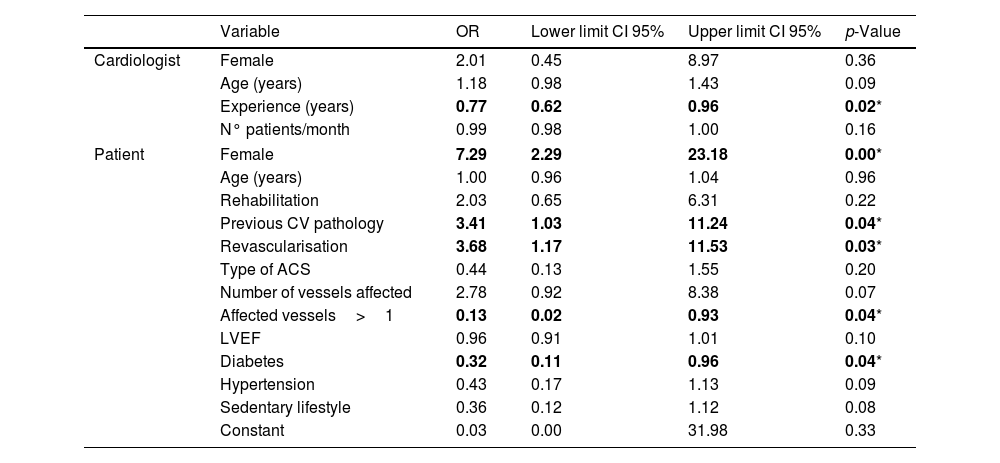A high number of patients do not achieve the therapeutic goals set by clinical practice guidelines, despite the therapeutic alternatives that currently exist in lipid-lowering treatment (LLT). This study aimed to estimate the proportion of patients who have recently suffered an acute coronary syndrome (ACS) who do not meet the therapeutic goal with LLT and the proportion of routine follow-up visits where therapeutic inertia (TI) occurs.
MethodsA retrospective study chart review was conducted in 13 Spanish centres. Patients aged ≥18 years who suffered an ACS event in the last two years and had received LLT were included. Sociodemographic, clinical, treatment and participating centre/physician-related variables were collected. TI was considered when a visit did not result in a change in the patient's therapy despite the non-achievement of therapeutic goals. Descriptive analysis was performed, and factors associated with TI were evaluated using logistic regression.
Results159 patients were included (mean age 63.08 years old, 80.5% male) and 338 follow-up visits were analysed. Over 50% of the patients did not meet the therapeutic target and TI was estimated in 39.13% of visits. Some factors were associated with a lower risk of TI: professional experience, number of vessels affected, and diabetes. And others with higher risk: being female, previous CV pathology and a complete revascularisation.
ConclusionThe management of patients after ACS is still suboptimal. The importance of clinical inertia in ACS remains a real awareness and active strategies will help mitigate this phenomenon due to the risk of recurrent ACS.
Un elevado número de pacientes no alcanzan los objetivos terapéuticos marcados por las guías clínicas, a pesar de las alternativas terapéuticas actuales en el tratamiento hipolipemiante (TH). El objetivo de este estudio fue estimar la proporción de pacientes con síndrome coronario agudo (SCA) tratados con TH que no cumplen el objetivo terapéutico y la proporción de visitas con inercia terapéutica (IT).
MétodosSe revisaron retrospectivamente historias clínicas en 13 centros españoles. Se incluyeron pacientes ≥18 años que recibieron TH por un evento de SCA en los últimos 2 años. Se recogieron las variables sociodemográficas, clínicas, de tratamiento y relacionadas con el centro/médico. Se consideró IT cuando la visita no resultó en cambio de terapia a pesar no lograr los objetivos terapéuticos. Se realizó un análisis descriptivo, y se evaluaron los factores asociados a la IT mediante regresión logística.
ResultadosSe incluyeron 159 pacientes (edad media: 63,08 años, 80,5% varones) y se analizaron 338 visitas de seguimiento. Más del 50% de los pacientes no cumplieron el objetivo terapéutico, y se estimó IT en el 39,13% de las visitas. Se asociaron con menor riesgo de IT: experiencia profesional, número de vasos afectados y diabetes. Y con mayor riesgo: ser mujer, enfermedad cardiovascular previa y una revascularización completa.
ConclusiónEl manejo de los pacientes después de un SCA aún es subóptimo. La IT en el SCA sigue siendo un problema actual e importante del cual hay que continuar con estrategias activas que ayuden a mitigar este fenómeno, dado el riesgo recurrente de SCA.










